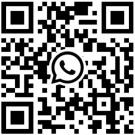In the concrete industry, defoamers are increasingly valued for their environmental performance as key additives. Accurately evaluating the environmental friendliness of concrete defoamers is not only related to environmental protection, but also affects the sustainable development of construction enterprises.

Evaluate the acute toxic effects of defoamers on organisms through animal experiments or in vitro toxicity testing, such as toxicity reactions after oral, inhalation, or skin contact. Examine the potential chronic toxic effects of defoamers on organisms and ecosystems, including carcinogenicity, mutagenicity, and reproductive toxicity, after long-term use or exposure to natural environments. Evaluate the degradation ability and rate of defoamers in natural environments to ensure that they do not accumulate for a long time and cause long-term pollution to the environment.
Assess the environmental friendliness of energy consumption, raw material selection, waste generation and disposal in the production process of defoamers to ensure that the production process meets environmental requirements. Analyze the impact of defoamers on the surrounding environment during concrete preparation, construction, and hardening processes, including potential pollution of air, water, and soil. Research on the recycling, reuse, or safe disposal of concrete waste (including defoamer components) to reduce its adverse impact on the environment.
Understand and comply with relevant national or regional laws and regulations on chemical emissions, ensuring that the emissions of waste gas, wastewater, and solid waste generated during the use of defoamers meet standards. Regularly review the ingredient list of defoamers to ensure that they do not contain prohibited substances and comply with the latest environmental regulations at home and abroad.
As users of defoamers, construction companies should enhance their environmental awareness and integrate environmental protection concepts into daily management and construction processes. When choosing defoamers, prioritize products with excellent environmental performance and avoid using products with high pollution and high risk. Strengthen environmental management at construction sites to ensure proper disposal of waste generated during the use of defoamers and reduce environmental pollution.
Establish an environmental performance feedback mechanism, regularly evaluate the environmental performance of defoamers, and continuously optimize usage plans based on evaluation results to promote the improvement of environmental performance.
In summary, the environmental assessment of concrete defoamers is a multidimensional and comprehensive process that requires the joint efforts of production enterprises, construction enterprises, and regulatory departments to comprehensively improve the environmental performance of defoamers.

 English
English
 Chinese
Chinese Vietnamese
Vietnamese
 HOME
HOME
 PRODUCT
PRODUCT
 NEWS
NEWS
 CONTACT
CONTACT


